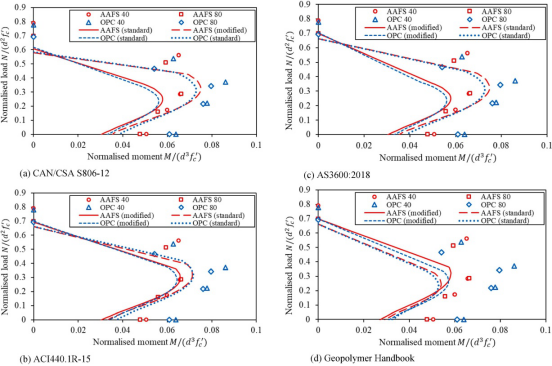[Structural Engineering]
Dong Minhao, Elchalakani Mohamed, Karrech Ali, Pham Thong M., Yang Bo*. Glass fibre-reinforced polymer circular alkali-activated fly ash/slag concrete members under combined loading [J]. Eng Struct, 2019, 199(22):109598.
Keywords: Circular cross-section;GFRP;Spirals;Alkali-activated fly ash/slag concrete; Combined loading;Interaction diagram
High Lights:
The use of longitudinal GFRP bars improves the ductility compared to steel bars.
The longitudinal GFRP bars contribute to the compression capacity when sufficiently restrained.
Alkali-activated fly ash/slag concrete has a reduced stress block compared to cement concrete.
A geometrical factor is introduced to well predict the stress block of circular members.
Abstract:
Glass fibre reinforced polymer(GFRP)reinforced alkali-activated fly ash/slag concrete(AAFS)could potentially be used as a durable construction material,especially in aggressive environments. This study aims to examine the structural behaviour of circular GFRP-reinforced AAFS members under combined loading,and introduces a geometrical factor for predicting the load and moment interaction of circular members. A total of 17 reinforced AAFS columns and beams(14 with longitudinal GFRP bars and 3 with steel bars)was constructed. GFRP spirals were used in all the specimens as transverse reinforcement. The effect of the number of longitudinal bars,the spiral pitch,the material of longitudinal bars and load eccentricities on confinement,load and moment capacity and failure modes was investigated. The GFRP reinforcement resulted in slightly reduced load capacities of 10%,however with an average improved ductility of 24% compared to steel reinforcement. The confinement was found to be affected by a combination of longitudinal and transverse reinforcement. The differences in load capacities between columns with 40mm and 80mm spiral pitches gradually diminished as the eccentricity increased. Interaction diagrams were constructed and validated based on the experimental data. The introduced geometrical factor could be used safely and effectively to obtain the equivalent stress block of circular sections. The calculation with a smaller stress block factor was the most accurate to the experimental results of AAFS members due to their reduced stress block size.
Resource:https://www.sciencedirect.com/science/article/pii/S0141029619315305

